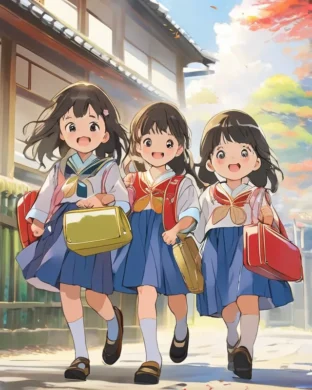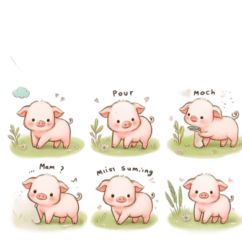Japanese school bags 【完全ガイド】日本のランドセルの魅力
History of School Bags
The history of school bags dates back to the Edo period. This is because the cloth knapsack, which was imported at the end of the Edo period and began to be used in the military, is said to be the beginning.
References:https://www.randoseru.gr.jp/history/rekishi.html
Emphasis and decisive factors in selecting Japanese school bags
Japanese school bags are popular school bags for elementary school students. There is a wide variety of materials and designs for Japanese school bags.
Although the design of Japanese school backpacks was considered less important than durability and fit, it ranked second after color as a reason for purchase.
Regarding school bag materials, artificial leather was on a downward trend at 33%, while cowhide, horse hide was at 22%, the same level as the previous year.
References: https://www.randoseru.gr.jp/graph/

Environmentally friendly Japanese school bag materials
Ethical School Bag
SEIBAN's ``Ethical School Bag'' is an environmentally friendly school bag that uses fabric materials that were previously disposed of during the school bag manufacturing process, surplus fabric is inevitably produced. Surplus fabric is stored in warehouses and has an expiration date to ensure quality, so even if there is no quality problem, it is subject to disposal. Ethical school bags are made using fabrics that would otherwise be discarded.

Plastic bottle
"New Land" is a school bag made using recyclable polyester "RENU®". Unlike general recycled polyester made from plastic bottles, RENU® is made from used clothing and factory waste (fabric).
Recycled nylon
``Umi'' is an environmentally friendly school bag that was born in Toyooka City, Hyogo Prefecture, which is a bag-making town and a port town. The product is designed with great attention to detail, including the use of discarded fishing nets for the main body, recycled nylon for the lining, and recycled polyester for the zipper. This is a high-quality product that has been certified as "Toyooka Bag®" by Toyooka City, which is known as Japan's number one producer of bags.

Pineapple leaves
A school bag made from plant-based leather. Peel Lab plans and develops products that are free of animal leather and synthetic leather, and this school bag is said to be made with plant-based leather made primarily from pineapple leaves.
Mushroom mycelium
"Milo" is a new material made from mushroom mycelium (root-like thread-like tissue made up of fungi) and is also called "mushroom leather."
References: https://lifehugger.jp/column/sustainable-schoolbag/

ランドセルの歴史History of School Bags
ランドセルの歴史は江戸時代にまで遡ります。幕末に輸入され、軍隊で使われ始めた布製のナップザックがその始まりと言われています。
参考文献:https://www.randoseru.gr.jp/history/rekishi.html
日本のランドセルを選ぶ際の重視点と決め手
Emphasis and decisive factors in selecting Japanese school bags
小学生に人気のランドセルは、日本製のランドセルです。素材やデザインも豊富です。
日本製のランドセルは、デザインは耐久性やフィット感に比べて重要度が低いものの、購入理由としては色に次いで2位にランクインしました。
ランドセルの素材については、人工皮革は33%と減少傾向にありましたが、牛革・馬革は前年と同水準の22%でした。
参考文献: https://www.randoseru.gr.jp/graph/
環境に優しい日本のランドセル素材Environmentally friendly Japanese school bag materials
エシカルスクールバッグEthical School Bag
セイバンの「エシカルランドセル」は、これまでリサイクル時に廃棄されていた生地素材を使用した環境に優しいランドセルです。
ペットボトルPlastic bottle
「ニューランド」は、リサイクルポリエステル「RENU®」を使用したランドセルです。ペットボトルを原料とする一般的なリサイクルポリエステルとは異なり、RENU®は古着や工場の廃棄物(生地)を原料としています。
リサイクルナイロンRecycled nylon
「海」は、鞄のまちであり港町でもある兵庫県豊岡市で生まれた、環境に配慮したランドセルです。本体には廃棄される漁網、裏地には再生ナイロン、ファスナーには再生ポリエステルを使用するなど、細部にまでこだわったデザインです。鞄の生産量日本一として知られる豊岡市より「豊岡鞄®」の認定を受けた高品質な商品です。
パイナップルの葉Pineapple leaves
植物由来の皮革を使用したランドセル。動物皮革や合成皮革に頼らない製品を企画開発するピールラボが、このランドセルにもパイナップルの葉を主原料とした植物由来の皮革を使用しているという。
キノコの菌糸体Mushroom mycelium
「ミロ」はキノコの菌糸体(菌類が作る根のような糸状の組織)から作られた新素材で、「キノコレザー」とも呼ばれています。
参考文献: https://lifehugger.jp/column/sustainable-schoolbag/


